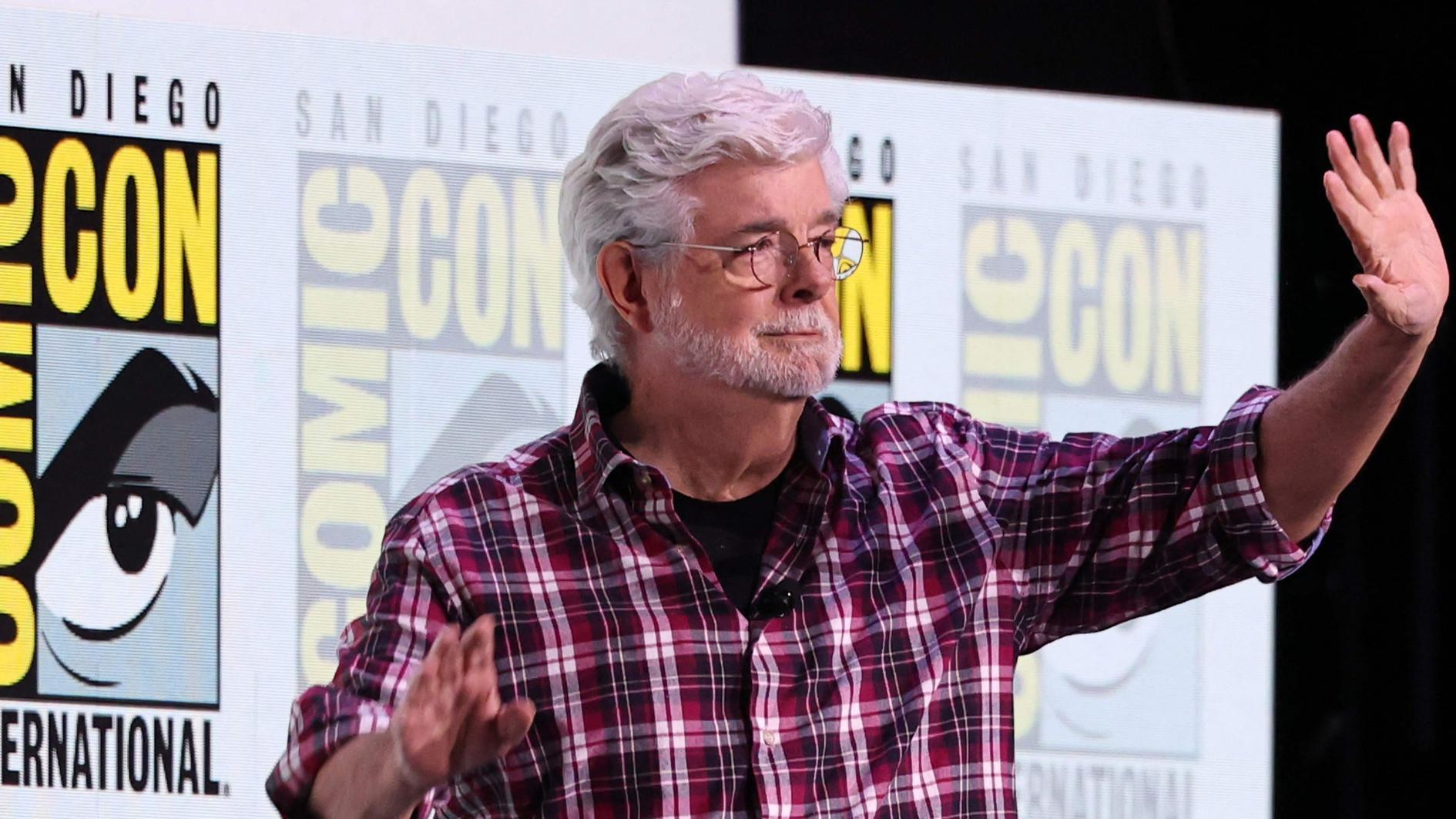
Comic-Con fans pulled out their lightsabers Sunday to welcome "Star Wars" creator George Lucas to the prominent pop culture convention for the very first time.
Attendees lined up for hours to grab a seat inside the 6,500-person capacity venue in San Diego, California to see the legendary filmmaker behind the "Indiana Jones" franchise speak at the event on its final day.
Comic-Con, which draws some 130,000 attendees, has become an important platform for movie studios and their stars to showcase the latest film and television offerings, especially those with a genre fan base.
Instead of discussing his film works, however, Lucas graced the convention to preview the Lucas Museum of Narrative Art — opening in Los Angeles in 2026 — which the director co-founded with his wife, businesswoman Mellody Hobson.
"I've been collecting art since I was in college," Lucas, 81, told the crowd, adding that he has amassed tens of thousands of pieces in his collection.
"I've been doing this for 50 years now, and then it occurred to me that what am I going to do with it all because I, I refuse to sell it.
"I could never do that, it's just, it's not what I think art is; I think it's more about an emotional connection," the director said.
In his description of the museum, Lucas said the institution will feature a blend of works.
"This is sort of a temple to the people's art," he said in summation.
Among the other members of the panel were Oscar-winning director Guillermo del Toro and production designer Doug Chiang, who shaped the aesthetic of the "Star Wars" universe for decades.
"What's remarkable about George is that he leads from the heart, and this museum is him," Chiang said.
Del Toro, who will release his latest film "Frankenstein" in November, said many of the museum's pieces will celebrate freedom of speech.
"We are in a critical moment in which one of the things they like to disappear is the past, you know, and this is memorializing a popular, vociferous, expressive and eloquent moment in our visual past that belongs to all of us," Del Toro said.